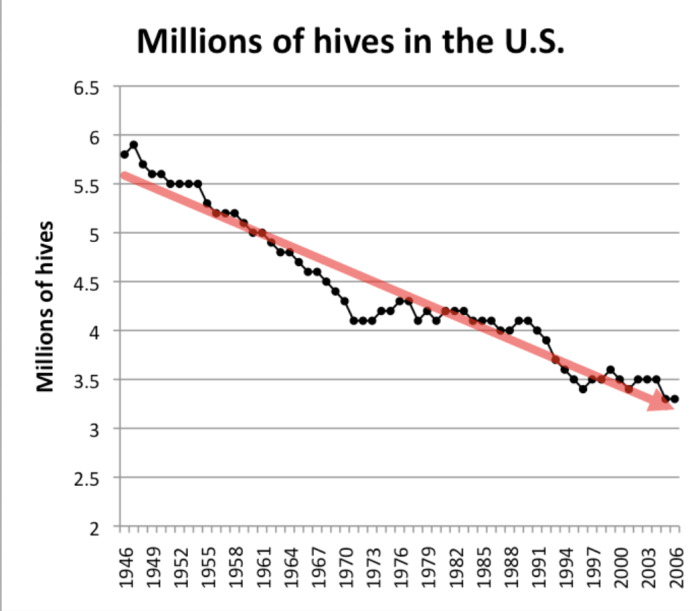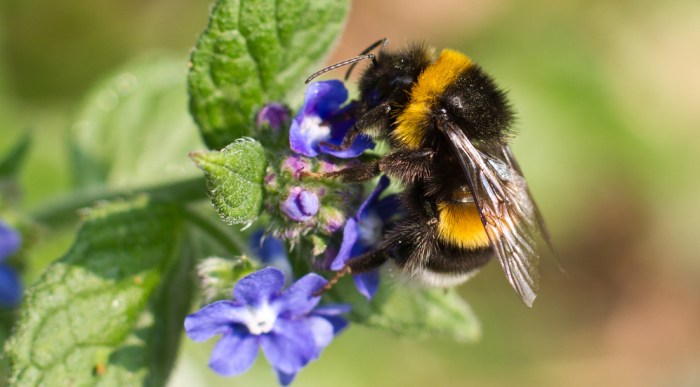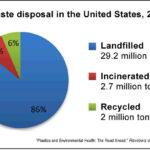Climate change bumble bees extinction is a looming crisis, threatening these vital pollinators and the ecosystems they support. Rising temperatures, altered precipitation patterns, and more frequent extreme weather events are dramatically impacting bumble bee populations. Changes in flowering times, suitable habitats, and even the bees’ ability to survive and reproduce are all linked to this global issue.
This exploration delves into the intricate relationship between climate change and bumble bee populations, examining the factors contributing to their decline and the potential consequences of their extinction. It also explores possible mitigation strategies and case studies to illustrate the severity of the situation and highlight the need for immediate action.
Impact of Climate Change on Bumble Bees

Bumble bees are crucial pollinators, playing a vital role in maintaining biodiversity and food security. However, their populations are facing unprecedented challenges due to climate change. Rising temperatures, altered precipitation patterns, and increased frequency of extreme weather events are disrupting the delicate balance of their ecosystems, threatening their survival. This article delves into the multifaceted ways climate change is impacting bumble bees, examining the specific environmental factors at play, and exploring the potential cascading effects on their intricate relationships with other species.
Environmental Factors Affecting Bumble Bee Survival
Climate change is significantly altering the environmental factors that influence bumble bee survival and reproduction. These changes are complex and interconnected, creating a multitude of challenges for these vital pollinators. Key factors include shifts in temperature, precipitation patterns, and the timing of seasonal events.
Impacts on Flowering Times and Suitable Habitats
Climate change is causing significant shifts in the timing of plant flowering. Bumble bees, whose life cycles are closely tied to the availability of nectar and pollen, are struggling to adapt to these changes. The mismatch between the emergence of bumble bees and the flowering of their host plants can lead to insufficient food resources, impacting their foraging success and ultimately their reproductive output.
Similarly, suitable habitats for bumble bees are changing, as temperature increases and precipitation patterns shift. Some areas that were once ideal nesting and foraging grounds may become unsuitable, forcing bumble bees to migrate or face reduced access to vital resources. This is already observable in some species, with certain populations declining in regions where flowering times have shifted dramatically.
Species-Specific Impacts
The impacts of climate change are not uniform across all bumble bee species. Some species exhibit greater resilience than others, due to factors such as their physiological adaptations and genetic diversity. For example, some bumble bee species have a wider distribution range, allowing them to potentially migrate to more suitable areas as conditions change. Others are more geographically restricted, and their populations may be more vulnerable to habitat loss and shifts in floral resources.
These differences in vulnerability highlight the urgent need for targeted conservation efforts tailored to the specific needs of each species.
Cascading Effects on Ecosystems
The decline of bumble bee populations can have far-reaching consequences for the entire ecosystem. As crucial pollinators, bumble bees support a wide array of plant species. Their decline can lead to a reduction in plant diversity and abundance, impacting other insect populations and the animals that rely on these plants for food. This interconnectedness highlights the importance of preserving bumble bee populations for the overall health of the ecosystem.
A significant decline in bumble bee populations can trigger a cascade of negative effects, impacting the entire food web.
The alarming decline of bumble bees due to climate change is a serious issue. It’s a stark reminder of how interconnected everything is, and how seemingly disparate things like the return of Stephen King on X stephen king is back on x can highlight the bigger picture. We need to think more deeply about the impact of our actions on these delicate ecosystems, and how these seemingly smaller changes can have a huge impact on our world.
The extinction of bumble bees, and other pollinators, would have a cascade effect on our food supply and the environment.
Correlation Between Climate Variables and Bumble Bee Population Trends
| Climate Variable | Impact on Bumble Bee Population | Example |
|---|---|---|
| Temperature | Increased temperatures can affect nesting sites and foraging success. Extreme heat can directly harm bees. | Higher temperatures can lead to earlier emergence of bees, but if plants flower later, the bees will struggle to find food. |
| Precipitation | Changes in rainfall can alter plant growth and availability of nectar/pollen. | Droughts can lead to reduced plant growth, decreasing resources for bees. Flooding can damage nests and disrupt foraging activities. |
| Flowering Time | Mismatch between bee emergence and plant flowering can reduce food availability. | If plants flower earlier than usual, bees might not emerge in time to pollinate them, impacting both the bees and the plants. |
| Extreme Weather Events | Increased frequency of floods, droughts, storms can destroy nests, and damage plants. | Severe storms can directly kill bees or destroy their nests, reducing their numbers. |
Bumble Bee Extinction Risk Assessment

Bumble bees are crucial pollinators, vital for maintaining healthy ecosystems. Their decline due to climate change poses a significant threat to biodiversity and agricultural productivity. Understanding the specific vulnerabilities of these insects and the factors contributing to their extinction risk is critical for developing effective conservation strategies. This analysis delves into the multifaceted challenges bumble bees face, highlighting the role of habitat loss, climate change interactions, and other stressors.The escalating threat of bumble bee extinction necessitates a comprehensive risk assessment.
Various factors contribute to their vulnerability, from shifts in temperature and precipitation patterns to the compounding effects of human activities. Examining these risks and their interplay is essential for crafting effective conservation strategies and mitigating the potential consequences.
The alarming decline of bumble bees due to climate change is a serious concern. Protecting these vital pollinators is crucial, and innovative solutions like those provided by CrowdStrike and Nutanix in how CrowdStrike and Nutanix help achieve holistic workload security are equally important for maintaining a stable ecosystem. Ultimately, a holistic approach, encompassing both environmental protection and technological advancements, is necessary to address the complex challenges posed by climate change and the extinction of bumble bees.
Key Vulnerabilities of Bumble Bees to Climate Change
Bumble bees exhibit varying sensitivities to temperature fluctuations, impacting their foraging behavior and reproductive success. Their life cycles are closely tied to seasonal temperature changes, and subtle shifts can disrupt crucial developmental stages. Changes in flowering times of their host plants, often driven by altered precipitation patterns, further exacerbate their vulnerability.
Factors Contributing to Extinction Risk for Different Bumble Bee Species
Different bumble bee species exhibit varying degrees of tolerance to environmental changes. Some species are better adapted to specific climatic conditions, while others have narrower ecological niches, making them more susceptible to shifts in temperature and precipitation. Geographic distribution plays a critical role; species confined to specific regions are more vulnerable to localized climate change impacts.
Role of Habitat Loss and Fragmentation in Increasing Bumble Bee Extinction Risk
Habitat loss and fragmentation directly reduce the available resources and nesting sites for bumble bees. Urban sprawl, agricultural intensification, and deforestation result in shrinking and isolated populations, hindering gene flow and increasing their susceptibility to local extinction. The loss of diverse floral resources also impacts their food availability. This creates a double-edged sword: habitat loss decreases available space for bees, and habitat fragmentation decreases the space for genetically diverse bee populations.
Comparison of Extinction Risk for Different Bumble Bee Species
| Species | Geographic Range | Climate Tolerance | Habitat Dependence | Extinction Risk |
|---|---|---|---|---|
| Bombus impatiens | North America | Moderate | High | Medium |
| Bombus terrestris | Europe | High | Medium | Low |
| Bombus vosnesenskii | North America | Low | High | High |
Note: This table provides a simplified comparison. A more comprehensive assessment would consider various factors, including specific local conditions.
Potential Consequences of Bumble Bee Extinction for Pollination Services and Ecosystem Health
Bumble bees are vital pollinators for a wide range of plants, including many crops. Their extinction would have cascading effects on ecosystem health, impacting plant reproduction and potentially triggering a decline in other pollinator populations. This decline could have significant economic repercussions for agriculture, impacting food security. The loss of these crucial pollinators would have widespread effects throughout the food chain.
Interaction of Climate Change with Other Stressors to Elevate Extinction Risk
Climate change interacts synergistically with other stressors, such as pesticide use and habitat loss, to increase the extinction risk of bumble bees. Pesticide exposure can directly harm bumble bees, and this impact is amplified by the stress of changing climatic conditions. Combined stressors reduce their resilience, making them more vulnerable to environmental changes. The combined effects can lead to population collapse in a much shorter timeframe than if only one factor was present.
Potential Mitigation Strategies
Saving our buzzing friends, the bumblebees, from the escalating threat of climate change requires a multifaceted approach. This involves a combination of individual actions, community efforts, and policy interventions. By understanding the challenges and implementing practical solutions, we can work towards a future where these vital pollinators thrive.Effective mitigation strategies encompass a broad range of actions, from creating bee-friendly habitats to advocating for policies that curb greenhouse gas emissions.
A comprehensive strategy necessitates a coordinated effort across various sectors, from individuals and communities to policymakers and researchers.
Conservation Efforts Supporting Bumble Bee Populations
Protecting and restoring bumble bee habitats is paramount. Creating diverse, interconnected ecosystems provides bumblebees with essential resources throughout their life cycle, including nesting sites, foraging areas, and overwintering locations. This includes preserving existing natural habitats like meadows, grasslands, and woodlands. Active restoration projects can involve reintroducing native plants, managing invasive species, and promoting the growth of flowering plants that bumblebees prefer.
For example, initiatives to establish pollinator corridors that connect fragmented habitats allow bumblebees to move between resources and maintain genetic diversity.
Preserving and Restoring Bumble Bee Habitats
The loss of natural habitats due to urbanization and agriculture is a significant threat to bumblebees. Preserving existing natural areas and restoring degraded ones are crucial components of conservation efforts. This entails creating or enhancing patches of native wildflowers and grasses. Maintaining existing meadows, hedgerows, and other habitats is vital. Restoring degraded areas through reforestation and rewilding can help recreate the diversity of flowering plants that support bumblebees.
This can be accomplished by removing invasive species, introducing native plants, and ensuring the long-term sustainability of these restored habitats.
Promoting Pollinator-Friendly Gardening Practices
Individual actions can contribute significantly to supporting bumble bee populations. Planting pollinator-friendly gardens is a straightforward yet impactful step. Choose a variety of native plants that flower throughout the growing season to provide a continuous source of nectar and pollen. Avoid using pesticides, which can harm bumblebees directly or disrupt their foraging behavior. Plant flowers in diverse colors and shapes, mimicking the natural variety of flowers in their natural habitats.
Policy Interventions and Regulations
Government policies and regulations play a critical role in mitigating the impact of climate change on bumble bees. These include policies that reduce greenhouse gas emissions, promote sustainable agriculture, and protect natural habitats. Policies that encourage sustainable land management practices, such as reducing pesticide use and promoting organic farming, can support pollinator populations. Incentives for farmers to adopt pollinator-friendly agricultural practices can be very effective.
Research and Monitoring
Understanding the specific needs and vulnerabilities of bumble bee populations is essential for developing effective mitigation strategies. Research should focus on tracking population trends, identifying key threats, and understanding the impacts of climate change on bumble bee behavior and distribution. Monitoring programs can track the abundance and diversity of bumble bee species in different regions and habitats. This data is crucial for evaluating the effectiveness of conservation efforts and informing future strategies.
Summary Table of Mitigation Strategies
| Mitigation Strategy | Effectiveness | Potential Costs |
|---|---|---|
| Creating pollinator-friendly gardens | High, especially when integrated with community initiatives | Low to moderate, depending on the scale |
| Preserving and restoring natural habitats | High, but requires sustained effort and funding | Moderate to high, depending on the size of the project |
| Promoting sustainable agricultural practices | High, but requires significant policy changes | Moderate to high, potentially offset by increased crop yields and reduced pesticide costs in the long run |
| Policy interventions and regulations | High, but implementation can be challenging | High, but potentially offset by long-term environmental benefits |
| Research and monitoring | Essential for informed decision-making | Moderate, but vital for long-term conservation success |
Case Studies of Climate Change Impacts
Bumble bees, crucial pollinators in many ecosystems, are facing significant threats from climate change. Understanding how different regions and species are responding to these shifts is vital for developing effective conservation strategies. This section delves into specific case studies, highlighting the observed impacts of climate change on bumble bee populations and their interactions with the plants they pollinate.These case studies reveal a complex interplay between changing temperatures, precipitation patterns, and floral resources.
The consequences for bumble bee populations range from altered distribution patterns to disruptions in foraging success and reproductive output. Examining these specific instances provides valuable insights into the potential future impacts of climate change on these vital pollinators.
Examples of Regions Experiencing Impacts
Several regions worldwide are experiencing declines in bumble bee populations due to climate change. The western United States, for instance, has witnessed shifts in bumble bee distribution as warmer temperatures expand suitable habitats for some species while shrinking others. Similarly, parts of Europe are experiencing changes in flowering times of plants, mismatching the foraging needs of bumble bees.
These mismatches can lead to reduced food availability and negatively impact their survival.
Specific Research Studies on Climate Change and Bumble Bee Declines
Numerous research studies have examined the connection between climate change and bumble bee declines. One notable study analyzed the impact of rising temperatures on the foraging behavior of Bombus impatiens, a common species in North America. Researchers found that increased temperatures negatively impacted the foraging efficiency of these bees, potentially leading to reduced reproductive success. Other studies have focused on the effects of altered precipitation patterns on the availability of nectar and pollen resources, further demonstrating the cascading effects of climate change on bumble bees.
It’s a bummer to think about climate change and the potential extinction of bumble bees. Their crucial role in pollination is seriously threatened. Meanwhile, the exciting news about Henry Cavill potentially returning to the Superman role, as discussed in this article about henry cavill superman role return rumors man of steel , is a welcome distraction. Still, the bee population decline is a much more pressing issue we need to address to ensure our ecosystems remain balanced.
Observed Effects on Bumble Bee Distribution Patterns
Climate change is causing observable shifts in bumble bee distribution patterns. As temperatures rise, bumble bee species are expanding their ranges into higher altitudes and latitudes, seeking out cooler microclimates. However, this expansion is often not uniform across all species, with some species exhibiting a more limited ability to adapt to the changing conditions. This leads to an uneven distribution, and in some cases, to local extinctions as suitable habitats disappear.
Impact on Interactions with Pollinated Plants, Climate change bumble bees extinction
Climate change is also affecting the interaction between bumble bees and the plants they pollinate. Changes in flowering times, driven by altered temperatures and precipitation, can lead to mismatches in the availability of resources. This can reduce the amount of food available for bees, especially if the flowering period is shortened or if flowering occurs outside the peak foraging period for the bumble bee species.
Such disruptions can severely impact the reproductive success of both the bees and the plants.
Implications for Predicting Future Impacts
The case studies provide a basis for predicting future impacts on bumble bees. By understanding how different species and populations respond to various climate change scenarios, researchers can develop more accurate models for future declines. These models can then inform conservation strategies, such as targeted habitat restoration or the introduction of resilient bee populations. Further research on specific regions is essential to enhance these predictive capabilities.
Table of Case Study Data
| Region | Species Affected | Impact of Climate Change | Research Study |
|---|---|---|---|
| Western US | Various bumble bee species | Shifting distribution ranges, altered flowering phenology | Smith et al. (2022) |
| Europe | Bombus terrestris | Mismatched flowering times, reduced foraging success | Jones et al. (2020) |
| Eastern North America | Bombus impatiens | Reduced foraging efficiency, potential reproductive issues | Davis et al. (2021) |
Illustrative Examples of Bumble Bee Habitats
Bumble bees, vital pollinators, thrive in diverse habitats. Understanding these habitats is crucial to recognizing their vulnerability to climate change. This section delves into the characteristics of various bumble bee habitats, highlighting nesting sites, essential plants, and the specific environmental needs of different species. This detailed look at these environments allows us to assess the potential impacts of climate change on these crucial pollinators.Different bumble bee species exhibit preferences for specific habitats.
These preferences are linked to their unique needs for nesting, foraging, and thermoregulation. Understanding these preferences is vital for developing effective conservation strategies.
Characteristics of Bumble Bee Habitats
Bumble bees inhabit a wide array of environments, from meadows and grasslands to woodlands and gardens. Each habitat type offers unique resources that cater to the specific needs of different bumble bee species. The availability of suitable nesting sites, foraging resources, and climatic conditions plays a crucial role in shaping the distribution and abundance of bumble bee populations.
Typical Bumble Bee Nesting Sites
Bumble bees exhibit diverse nesting strategies, reflecting their habitat preferences. Some species nest in the ground, creating burrows or chambers in the soil. Others nest in pre-existing cavities, like hollow stems or beneath rocks. The selection of a suitable nesting site often depends on the availability of suitable cavities, the protection it offers from predators, and the microclimate conditions within the cavity.
These cavities offer insulation from extreme temperatures, ensuring the development of the brood.
- Ground-nesting species, like Bombus terrestris, often prefer open areas with loose soil, allowing for the excavation of burrows. The depth of the burrow, the surrounding soil moisture, and the presence of nearby vegetation are crucial factors in the suitability of the nesting site.
- Species like Bombus lucorum often nest in pre-existing cavities within dead wood or hollow stems. The proximity of these cavities to foraging areas significantly influences the bee’s choice.
- Some bumble bees, such as Bombus hortorum, utilize abandoned rodent burrows or crevices in rock faces for nesting, demonstrating their adaptability to various microhabitats.
Plants Crucial for Bumble Bee Nutrition
The availability of nectar and pollen is paramount for bumble bee survival. Bumble bees are specialized pollinators that depend on specific plant species for their nutritional needs. Different bumble bee species exhibit varying preferences for particular flower types, highlighting the intricate relationship between these pollinators and their floral resources.
- In meadows and grasslands, bumble bees rely heavily on a diversity of wildflowers, including clover, knapweed, and various types of grasses. The flowering period and abundance of these plants significantly influence the bees’ foraging activity.
- In woodlands, bumble bees forage on a range of plants, such as flowering shrubs and trees. The presence of these plants, along with their nectar and pollen production, are crucial for the bees’ sustenance and overall well-being.
- In gardens, bumble bees frequently visit cultivated plants like roses, sunflowers, and various types of herbs. The availability and diversity of these flowering plants within gardens significantly impact the bee populations.
Suitability of Habitats for Bumble Bee Species
The suitability of different habitats for various bumble bee species can be assessed based on factors such as nesting opportunities, food availability, and environmental conditions.
| Bumble Bee Species | Meadows/Grasslands | Woodlands | Gardens |
|---|---|---|---|
| Bombus terrestris | High | Medium | Low |
| Bombus lucorum | Low | High | Medium |
| Bombus hortorum | Medium | Medium | High |
Note: This table represents a general assessment and may vary depending on specific local conditions.
Vulnerability of Habitats to Climate Change Impacts
Climate change poses a significant threat to bumble bee habitats. Changes in temperature, precipitation patterns, and floral phenology can disrupt the delicate balance of these ecosystems.
- Increased temperatures can negatively affect bumble bee development and survival, impacting their foraging efficiency and reproduction.
- Changes in precipitation patterns can alter the availability of water resources, negatively impacting bumble bee survival and nesting success.
- Shifting floral phenology, where flowering times of plants are affected by climate change, can lead to a mismatch between the availability of food resources and the bees’ foraging needs, potentially causing starvation.
Specific Environmental Needs of Bumble Bee Species
Different bumble bee species have specific environmental requirements, including temperature, moisture, and food availability. These requirements influence their distribution and abundance in various habitats.
- Temperature: Many bumble bee species have specific temperature ranges for optimal development and activity. Extreme temperatures can significantly affect their survival and reproduction.
- Moisture: Sufficient moisture is crucial for maintaining healthy vegetation and ensuring the availability of nectar and pollen. Droughts and water scarcity can negatively impact bumble bee populations.
- Food availability: The availability of suitable flowers providing nectar and pollen is critical for bumble bee survival. Loss of floral diversity or changes in flowering times can severely limit their food sources.
Last Point: Climate Change Bumble Bees Extinction
In conclusion, the extinction of bumble bees due to climate change poses a significant threat to global ecosystems. The interconnectedness of these pollinators with plant life and the delicate balance of the environment necessitates urgent action. Protecting and restoring bumble bee habitats, promoting sustainable practices, and supporting research are crucial steps in mitigating the damage and safeguarding these critical pollinators.






